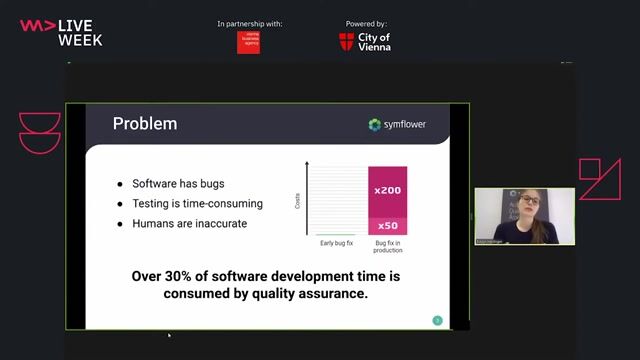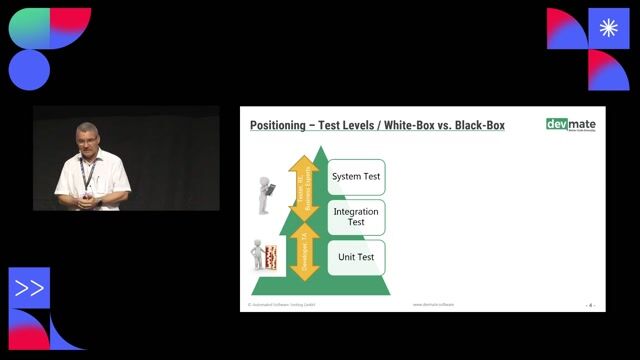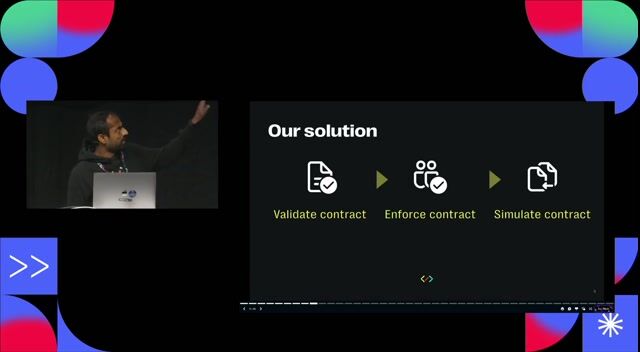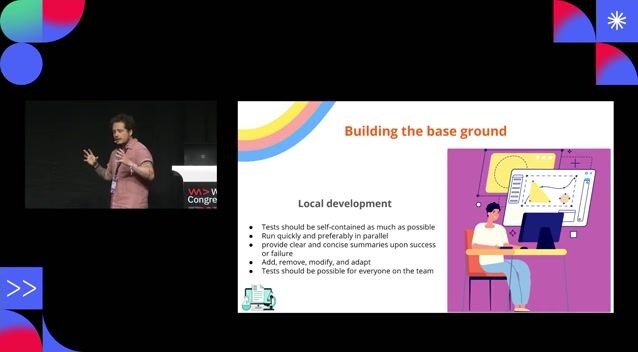Roman Alexis Anastasini
Using code generation for test automation – the fancy way
#1about 3 minutes
Setting up NSwag for OpenAPI documentation in .NET
Replace the default Swashbuckle with NSwag to generate OpenAPI specifications for a new .NET web application.
#2about 3 minutes
Automating swagger.json generation on every build
Configure the project file to automatically run the NSwag command-line tool after each build to create an up-to-date swagger.json file.
#3about 4 minutes
Generating a typed C# client for the test project
Use the generated swagger.json file to automatically create a strongly-typed C# HTTP client within the test project.
#4about 4 minutes
Using the generated client for robust API-level tests
Write API-level tests that consume the generated client, ensuring that any API signature changes result in compile-time errors.
#5about 7 minutes
Testing DTOs, validation, and API error handling
Leverage the generated client and DTOs to easily test complex validation rules, serialization formats, and API exception handling.
#6about 4 minutes
Achieving high test coverage with API-level tests
Focusing on API-level tests provides high code coverage and confidence for refactoring while reducing the effort spent on traditional unit tests.
#7about 2 minutes
Key lessons learned from this testing approach
This approach requires writing precise controller code and evolving from slow Docker-based databases to faster in-memory databases for tests.
#8about 1 minute
Q&A: Why API tests can be more efficient than unit tests
API-level tests reduce the developer time spent writing and maintaining numerous small unit tests, especially as the codebase grows.
#9about 1 minute
Q&A: Managing code coverage targets and exceptions
Set a high but realistic code coverage target like 90-95% to avoid writing useless tests for unreachable edge cases.
#10about 2 minutes
Q&A: Automating checks for breaking API changes
A potential improvement is to add a CI step that tests the new API version against a client generated from a previous API version.
#11about 2 minutes
Q&A: Managing test state and database setup
Use the web application factory to manage test setup, such as spinning up an in-memory database and seeding it with data for each test class.
#12about 2 minutes
Q&A: Mocking external service dependencies in tests
Isolate the API under test by mocking external service calls through interfaces, reserving full integration tests for the CI pipeline.
#13about 3 minutes
Q&A: The accidental discovery of this testing workflow
The idea to use the generated client in tests originated from the initial goal of providing an easy-to-use client for other consumer APIs.
Related jobs
Jobs that call for the skills explored in this talk.
Featured Partners
Related Videos
 43:07
43:07How not to test
Golo Roden
 30:55
30:55Why you must use TDD now!
Alex Banul
 45:24
45:24How will artificial intelligence change the future of software testing?
Evelyn Haslinger
 42:34
42:34How To Test A Ball of Mud
Ryan Latta
 47:22
47:22Continuous testing - run automated tests for every change!
Christian Kühn
 29:31
29:31Are you still programming unit tests or already generating?
Johannes Bergsmann & Daniel Bauer
 26:02
26:02Contract Testing - How do you tame an external API that constantly breaks your tests
Vincent Hennig & Anupam Krishnamurthy
 29:13
29:13Testing .NET applications a Tool box for every developer
Alexandre Borges
From learning to earning
Jobs that call for the skills explored in this talk.


Software Development Engineer in Test (m/w/d)
intersoft GmbH
Hamburg, Germany
Senior
Java
Automated Testing


Test System and Release Engineer (m/w/d)
AKDB Anstalt für kommunale Datenverarbeitung in Bayern
München, Germany
Intermediate
Senior
JavaScript
Automated Testing




Software QA Engineer C# | Testpläne, UnitTests, Testautomation, TFS, Git, BDD | Inhouse (mwd) Software QA Engineer C# | Testpläne, UnitTests, Testautomation, TFS, Git, BDD | Inhouse (mwd)
Vesterling Consulting GmbH
München, Germany
€55-85K
GIT
ASP.NET
Unit Testing
QA Engineer (Manual Testing Focus, Automation Experience a Plus)
Interactivated Solutions Europe
iOS
JIRA
Scrum
Python
Cypress
+3


